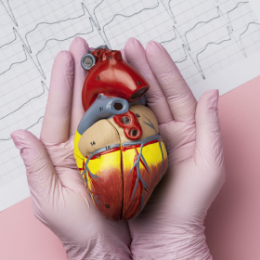Overview
Cardiac catheterization is a procedure that involves guiding a thin, flexible tube (catheter) through a blood vessel and into the heart to diagnose or treat specific heart conditions, such as blocked arteries or an irregular heartbeat. Cardiac catheterization provides doctors with important information about the heart muscle, its valves, and its blood vessels.
During cardiac catheterization, doctors can perform various heart tests, deliver medication to the heart, or remove a piece of heart tissue for examination. Some heart disease treatments, such as coronary angioplasty and coronary stent placement, can also be performed using cardiac catheterization.
You're usually awake during a cardiac catheterization procedure, but you take medications to help you relax. Cardiac catheterization is characterized by a short recovery time and a low risk of complications.
Why is this being done
Cardiac catheterization is a common procedure intended to diagnose or treat a variety of heart problems. For example, your doctor may recommend this procedure if you have an irregular heartbeat (arrhythmia), chest pain (angina), heart valve problems, etc.
Cardiac catheterization may be performed during the diagnosis or treatment of the following conditions:
Coronary artery disease
Congenital heart disease
heart failure
Diseases of the heart valves
Microvascular diseases
During the cardiac catheterization procedure, the doctor may:
Locating narrowed or blocked blood vessels that may be causing chest pain (angiogram)
Measurement of pressure and oxygen levels in different parts of the heart (haemodynamic assessment)
Determining the efficiency of the heart in pumping blood (imaging of the right or left ventricle)
Taking a sample of heart tissue (biopsy)
Diagnosis of heart problems present from birth (congenital heart defects)
Diagnosis of heart valve diseases
Examination of blood vessels for blood clots
Cardiac catheterization may be performed simultaneously with other cardiac procedures, such as:
Widening of a narrowed artery (angioplasty) with or without stent placement
Treating arrhythmias with heat or cold (cardiac ablation)
Closing holes in the heart and repairing other congenital heart defects
Widening of narrowed heart valves (balloon valvuloplasty)
Heart valve repair or replacement (valvular heart surgery)
